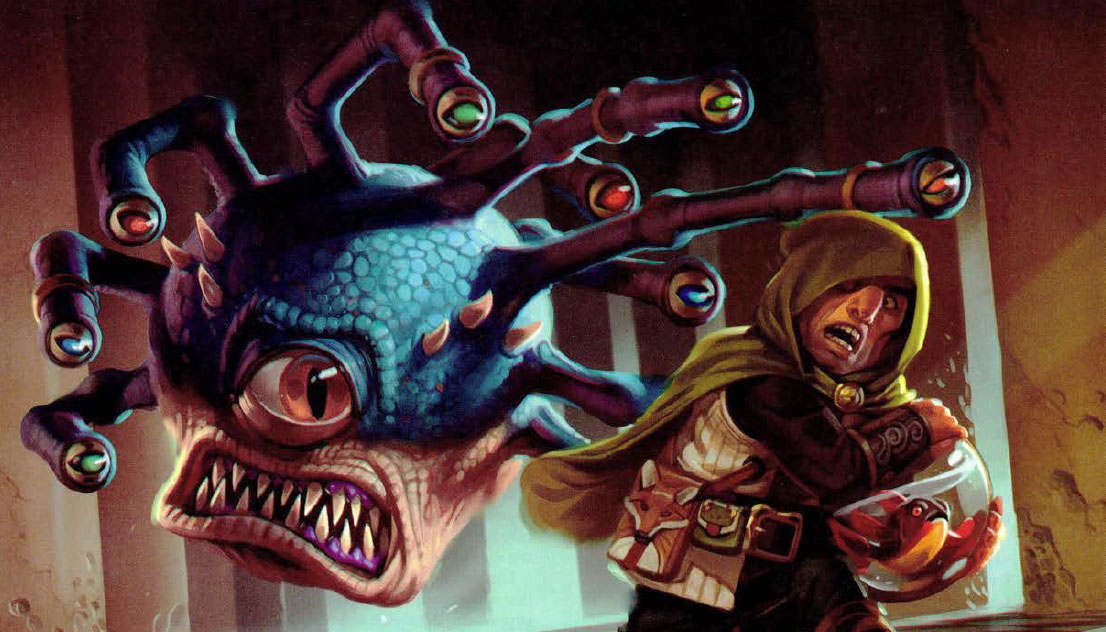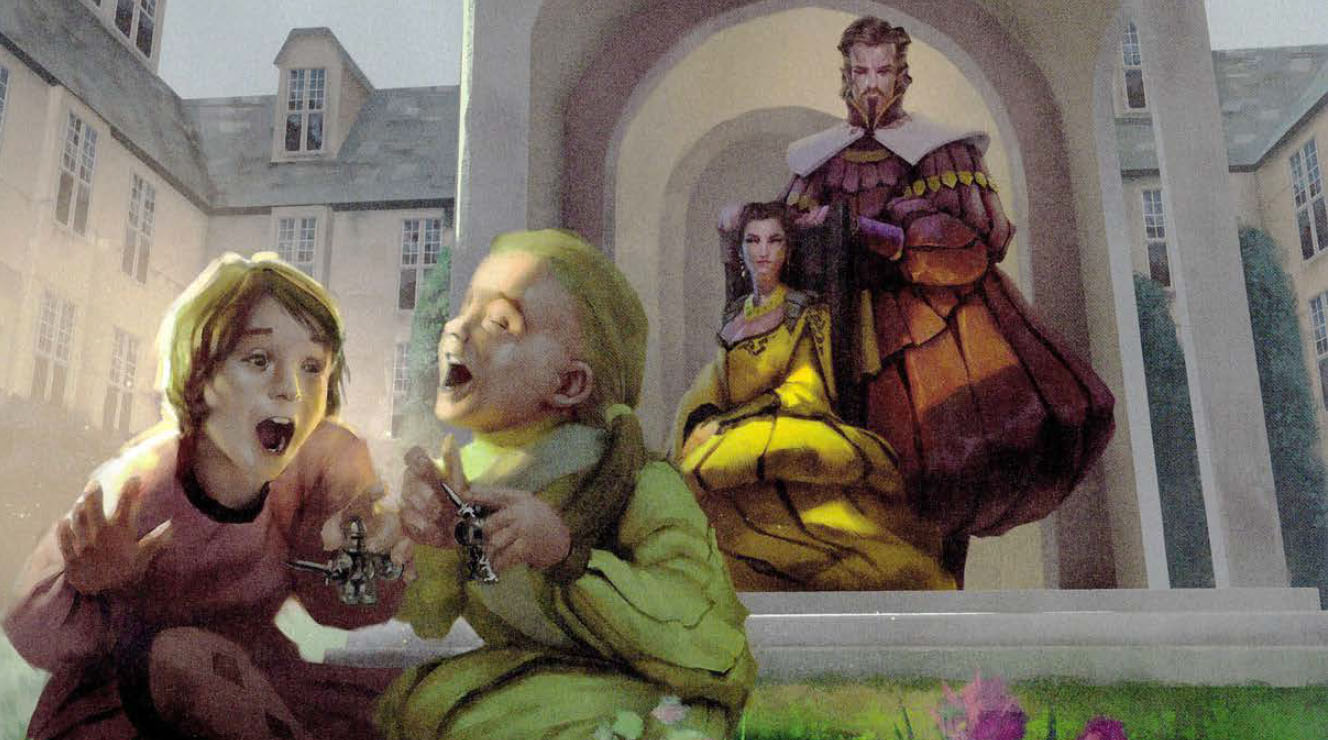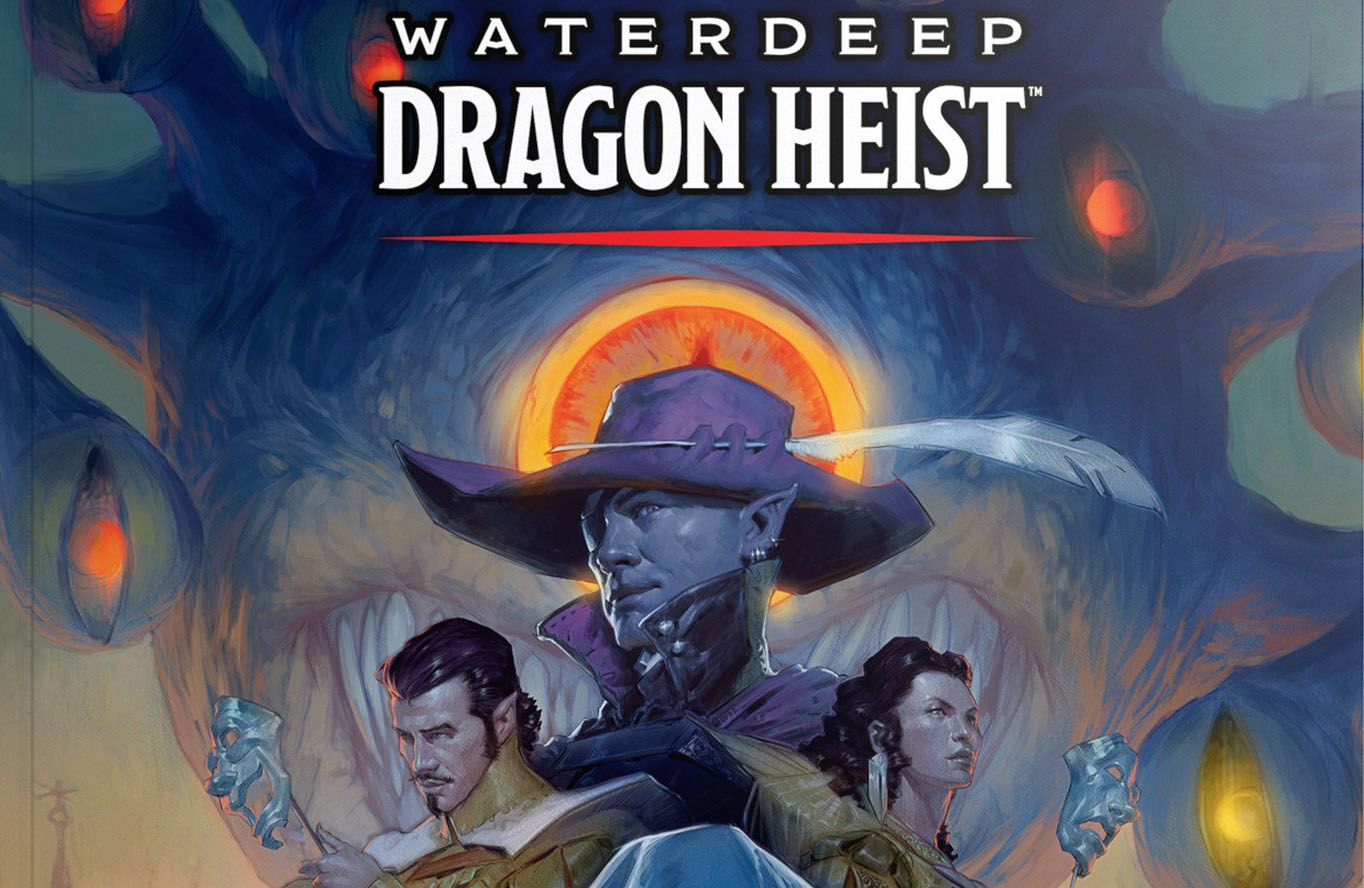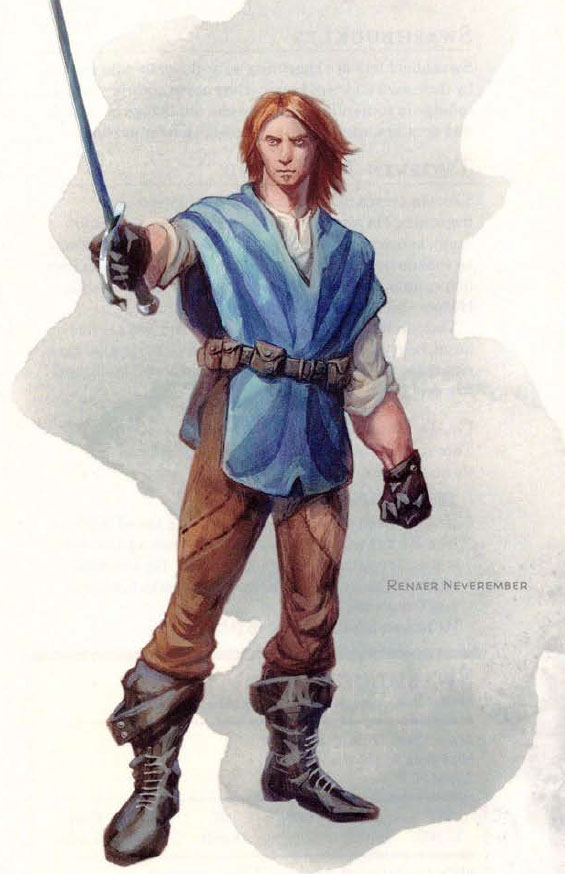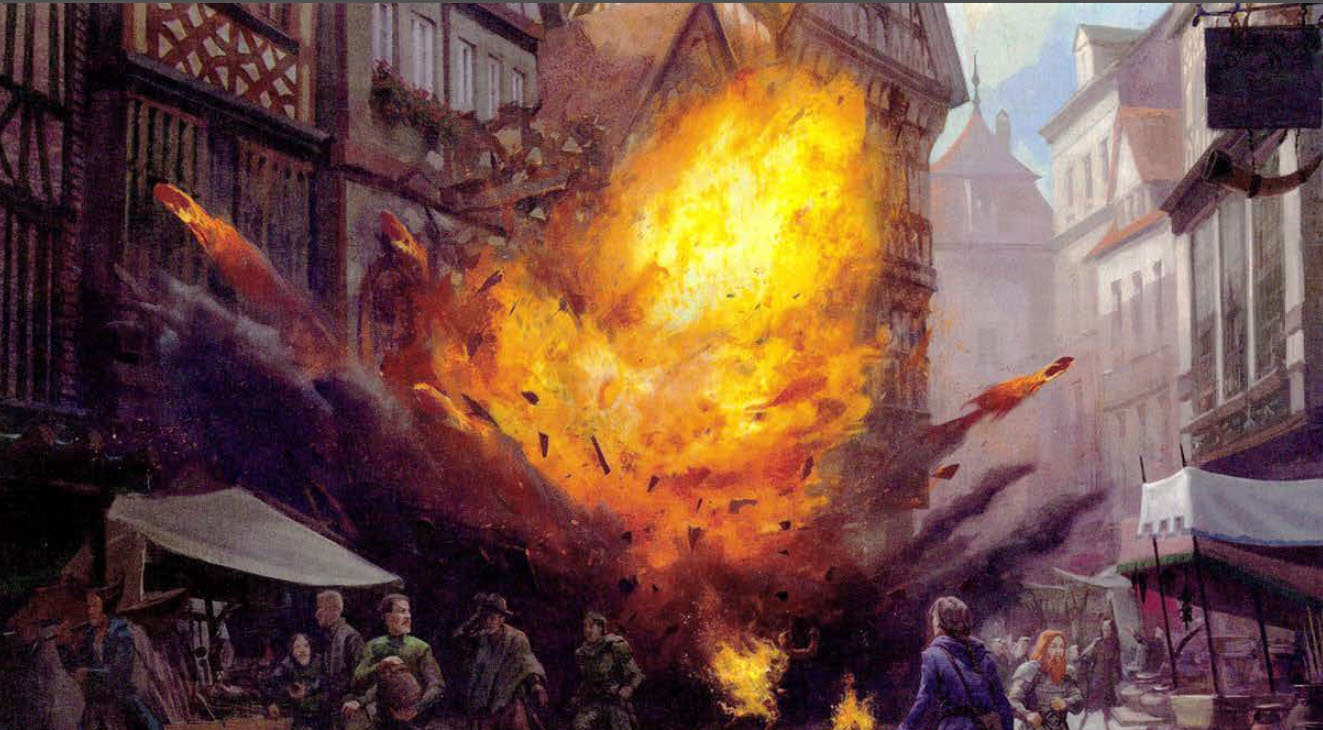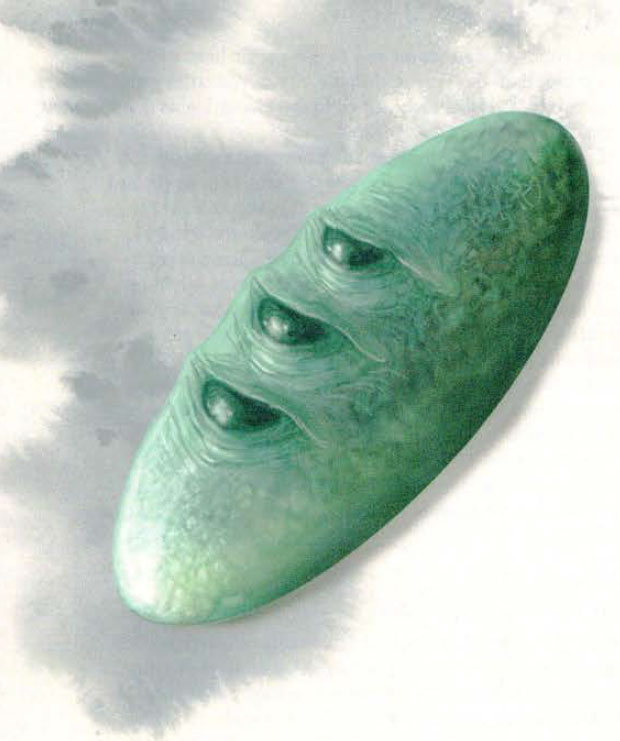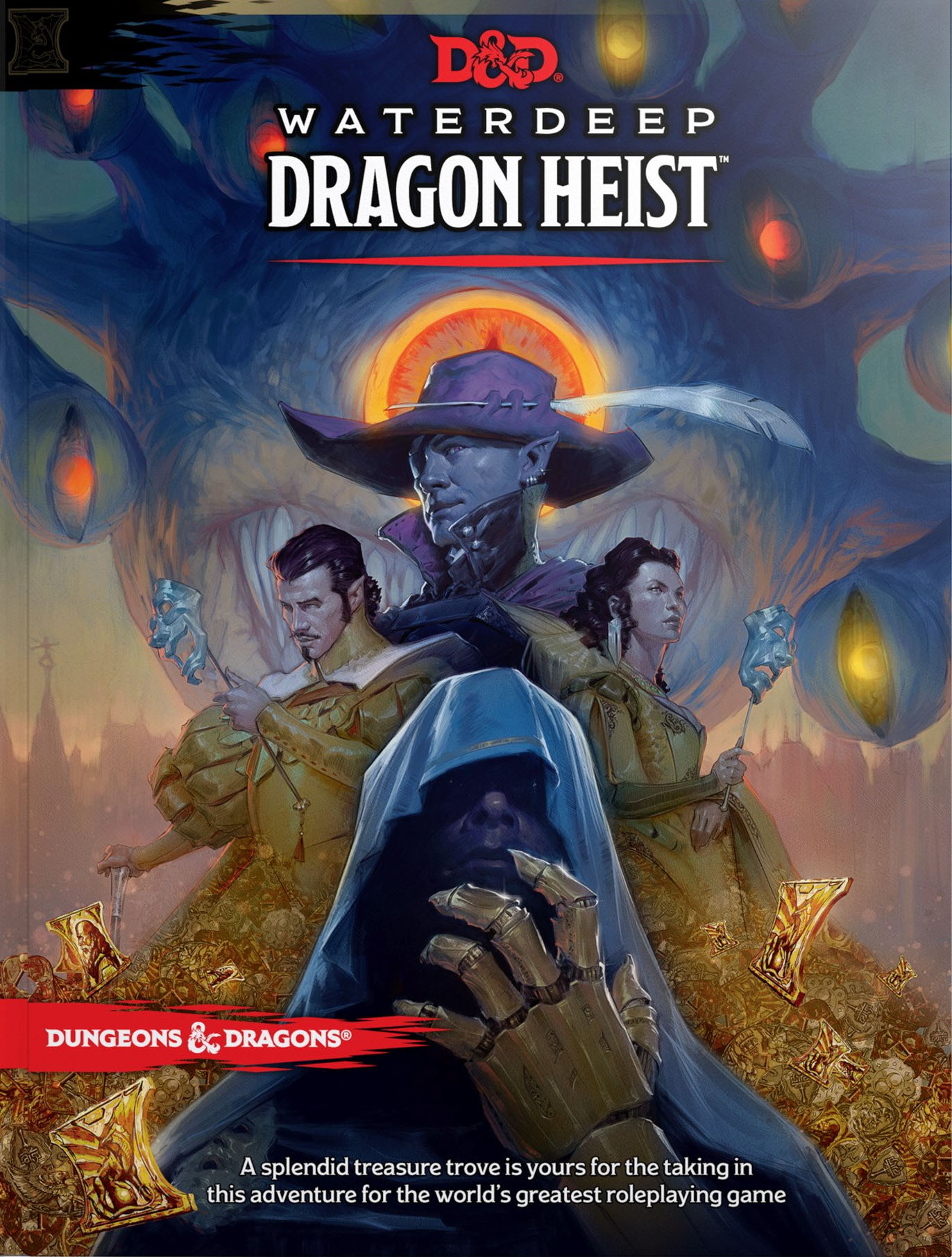
Recently I reviewed Waterdeep: Dragon Heist, the most recent campaign supplement for Dungeons & Dragons from Wizards of the Coast. That review highlighted a number of places where, unfortunately, I felt that Dragon Heist came up a little short in terms of its design. Since writing that review, I’ve had several people ask — based in part, perhaps, on my previous experience remixing the Keep on the Shadowfell and Eternal Lies — if I would “fix” Dragon Heist for them.
Short answer: Yes.
Unlike Hoard of the Dragon Queen, for which I received similar requests, Dragon Heist has a lot of really great material in it. Material that’s worth bringing to your gaming table. The primary goal of this remix is, in fact, to make sure that you can bring even MORE of this material to your gaming table than the published campaign allows, and to re-structure the material in a way that will make it easy and rewarding for you to run the campaign.
With that being said: If you’re expecting something as expansive as my remix of Eternal Lies or as mechanically-oriented as my remix of Keep on the Shadowfell, I’m afraid you’ll be disappointed. My goal with Dragon Heist is more narrowly focused, although it will perhaps serve as an exemplar of how I often rework published material in order to create a richer, more dynamic, and (importantly) more robust scenario.
EDIT: In the course of writing and developing the Alexandrian Remix, the scope of the project expanded. This is discussed in more detail in Part 7: How the Remix Works, but the originally design-oriented discussion ambitiously grew into a much more prodigious project than I’d originally intended. These essays were not designed for use at the table, and became even less useful as such as time went by. If this is your first time visiting the remix, I recommend reading through this series to understand how and why it works. If you’re looking to actually run the remix, you’ll want to have run-time notes: A description of those can be found in Part 7.
This advice also holds if you’re ever feeling overwhelmed by the minutia of the Remix: Skip to Part 7 and read “How the Remix Works” followed by “A Simple Checklist.” It’s easier than you think!
COLLECTED EDITION
Patrons of the Alexandrian can download a collected edition of the Remix. This includes:
- The Complete Collection, a PDF with all 25 parts of the Remix plus the original review, addendums, and Running the Campaign essays in one convenient file.
- Justin’s Running Files, a Patron-exclusive collection of the documents I actually ran the campaign from (as described above and in Part 7 of the Remix). These are presented in Word format for easy editing and re-arranging to your heart’s content.
Part 1: The Villains
Part 1B: Other Factions
Part 1C: Player Character Factions
Part 2: Gralhund Villa
Part 3: Faction Outposts
Part 3B: More Faction Outposts
Part 3C: Response Teams
Part 3D: Other Response Teams
Part 4: The Eyes of the Stone
Part 4B: Bregan D’Aerthe – Sea Maidens Faire
Part 4C: Cassalanter Villa
Part 4D: Xanathar’s Lair
Part 4E: Zhentarim – Kolat Towers
Part 5: Clues and Timelines
Part 5B: Finding Floon
Part 5C: The Nimblewright Investigation
Part 5D: Backtracking Dalakhar & Kalain
Part 5E: Outpost and Lair Revelation List
Part 6: Golorr Artifacts
Part 6B: The Brandath Crypts
Part 6C: The Vault
Part 6D: Faction Reports (Gralhund/Jarlaxle)
Part 6E: Faction Reports (Cassalanter)
Part 6F: Faction Reports (Xanathar/Zhentarim)
Part 7: How the Remix Works
ADDENDUMS
Addendum: First Impressions
Addendum: The Twin Parades
Addendum: Fancy Props
Addendum: Other Collaborators
Addendum: A Night in Trollskull Manor
Addendum: The Dragon of Dragon Heist
Addendum: Timelines & Starting the Campaign
Addendum: The Blinded Stone
Addendum: Tutors for the Orphans
Addendum: Dragon Heist – Accelerated!
LORE
Forgotten Realms: A Textual History of the Yawning Portal
RUNNING THE CAMPAIGN
Running the Campaign: A Party at Shipwrights’ House
Running the Campaign: The Manshoon Heists
Running the Campaign: Creating the Characters
Dragon Heist: The Final Session
TRANSLATIONS
Chinese
DESIGN GOALS
In remixing Dragon Heist, I have three primary goals.
First, I want to make it a HEIST. Or, more accurately, multiple heists.
Second, I want to eliminate the original “pick a villain” gimmick and instead restructure the campaign to feature ALL OF THE VILLAINS. The goal is to get all of the factions interested in the Vault competing with each other, and then thrust the PCs into the middle of that situation, bouncing around and causing all kinds of chaos.
Third, we’ll be doing a general FIX-UP JOB. This will include an attempt to clean up the broken continuity in the published campaign and also an effort to make the campaign’s scenario structure more robust (by applying the Three Clue Rule, for example).
Because I don’t want to get too consumed with minutia, however, this final point will not take the form of attempting to track down every single continuity error in the scenario. Instead, I’ll be looking to perform a broader reorganization of Dragon Heist’s back story that will hopefully rearrange its diverse parts into a coherent whole, and then trust the DM to resolve the local continuity appropriately using these broad reference documents as their touchstone.
Even if you don’t own Waterdeep: Dragon Heist, I hope you’ll find some points of interest in my design notes and other discussion. But it probably goes without saying that in order to actually use this remix, you’ll need to own a copy of the book.
We’ll begin with the villains.
THE GRAND GAMES
Periodically throughout Waterdeep’s history the byzantine factions of the city — or some significant subset thereof — will become collectively fixated upon some objective. Thus will begin a Grand Game.
Sometimes the goal of a Grand Game will be arcane. Often it is clandestine, although quite public struggles are not unknown. (On no less than three occasions the Grand Game has revolved around the appointment of the Open Lord.) Whatever the case, the intense rivalries of the Grand Game give birth to all forms of subterfuge, covert activities, deception, and intrigue.
This is very much the case with the current quest for Dagult Neverember’s vault. Obliquely referred to by many players of the Grand Game as Neverember’s Enigma, the truth of the vault was sought even before the players realized it was a vault. At first, it was merely known that the disgraced and ousted Neverember was keeping some momentous secret, and those involved in the Game yearned to discover what the former Open Lord of Waterdeep was hiding.
When the vast scope of his embezzlement — a half million gold dragons! — came to light, however, many intuited the truth behind Neverember’s Enigma and its pursuit became even more frenzied.
In terms of the Dragon Heist campaign, we will focus on five factions participating in the Grand Game:
- Xanathar, a beholder crime boss
- the Zhentarim, a network of assassins and mercenaries
- the Cassalanters, a devil-worshipping noble family
- Jarlaxle Baenre, a drow swashbuckler who is the secret lord of a city, leader of the dark elf mercenary group Bregan D’Aerthe, and has surreptitiously come to Waterdeep as the captain of a traveling circus
- the Gralhunds, a minor noble family who is way out of their league
For each of these factions, we will want to know:
- What they’re planning to do with the gold (which is largely, with the exception of our revised version of the Gralhunds, dealt with in the original book)
- How they became involved with Neverember’s Enigma and what their current strategy for pursuing the Grand Game is
- How the PCs first interact with them and become aware of their involvement in the Grand Game
DESIGN NOTES
The concept of the “Grand Game” was created to give a convenient label to the proceedings. As the PCs are exposed to this label, it will help them conceptualize what they have become a part of. It also elevates the hunt for the vault, tying it into the long history of the city and the rivalry of its factions. As the PCs make the choice to join the Grand Game, it will be clear to them that they have crossed a threshold and become part of something larger than anything they have taken part in before. (And thus they themselves have become more important.)
The terminology of “Neverember’s Enigma” is deliberately cryptic. It allows the participants of the Grand Game to speak in code while wrapping their words in elliptical euphemisms, creating a sense of mystery which will invite the PCs to drive forward and discover the truth of what’s happening.
XANATHAR
When Xanathar had the Stone of Golorr stolen from the Palace of Waterdeep, he only knew that he was stealing an object of great importance to Lord Neverember (i.e., Neverember’s Enigma). When he later learned about the missing dragons, he believed that he was now in possession of the whole key to Neverember’s Vault. And he was perfectly happy with that. You don’t need to actually hold the gold if you’re the one who controls its location.
What he didn’t know was that the Stone of Golorr had been blinded by Lord Neverember, who removed its three Eyes. (More on this in Part 4 of the remix.)
Then the Zhentarim came to him with one of the Eyes and said, “We have two different parts of this puzzle. We’d like to make a deal.” Xanathar was enraged at both their presumption and his own folly, slew the Zhentarim envoys, and took the Eye they had brought to him.
Thus began the gang war between the Zhentarim and Xanathar. Xanathar was convinced that the Zhentarim had the other Eyes. (They didn’t. Although that changes shortly after Dragon Heist begins; see below.) The Zhentarim, for their part, wanted both vengeance AND their Eye back (and the Stone of Golorr itself for good measure).
The gang war, in turn, became the point at which everyone who knows what’s really going on in Waterdeep (or likes to think they do) became aware that a Grand Game was in progress. In the process, Dagult Neverember became aware that it was Xanathar who had stolen the Stone of Golorr and he reassigns Dalakhar to infiltrate Xanathar’s organization and steal the Stone back.
ZHENTARIM
The Zhentarim were originally founded as a mercenary force by the wizard Manshoon, but they’ve been a fractured organization ever since the Manshoon Wars, when multiple clones of Manshoon warred for supremacy.
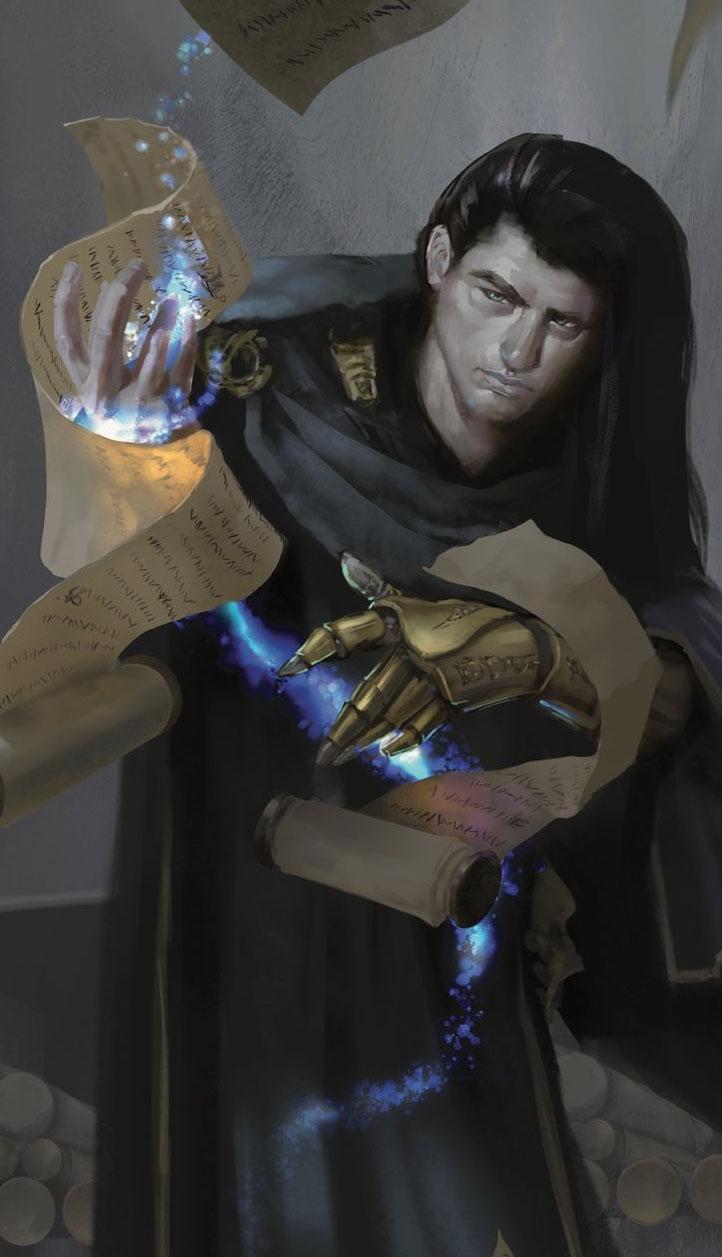 Most of Manshoon’s clones were destroyed during the Manshoon Wars, but yet another has recently returned to Waterdeep (claiming, as they all do, to be the one true Manshoon). When he peeled off a large hunk of the local Zhentarim network that had been established by the Doom Raiders (see p. 198 of Dragon Heist), he became aware that Lord Neverember had used the local Zhentarim’s resources to embezzle hundreds of thousands of gold dragons from the government.
Most of Manshoon’s clones were destroyed during the Manshoon Wars, but yet another has recently returned to Waterdeep (claiming, as they all do, to be the one true Manshoon). When he peeled off a large hunk of the local Zhentarim network that had been established by the Doom Raiders (see p. 198 of Dragon Heist), he became aware that Lord Neverember had used the local Zhentarim’s resources to embezzle hundreds of thousands of gold dragons from the government.
Manshoon wanted to know where that money has gone. He knew that Neverember didn’t actually have it in his possession, so he sent agents to infiltrate Neverember’s household in Neverwinter to find out. Those agents weren’t able to fully ascertain where the gold was, but they did identify the Eye as the key to getting it. They stole the Eye from the Protector’s Enclave and brought it to Manshoon, who through a combination of divinations and other espionage efforts eventually connected it to the Stone of Golorr which Xanathar had stolen.
CHAPTER 1 – A FRIEND IN NEED: After he lost his Eye to Xanathar, Manshoon needed to get back in the game. His agents eventually concluded that Neverember’s son, Renaer, might have another of the Eyes. They were right, although Renaer didn’t know it: His father had given him an elaborate, ivory mourning locket in honor of his mother. The Eye was hidden inside it.
The full dynamic in the first chapter, therefore, is this:
- Zhentarim agents snatch Renaer Neverember and his friend Floon Blagmaar.
- While questioning Renaer in Area Z5, they realize that the Eye is in the mourning locket and take the locket from Renaer.
- Renaer is hauled back down to Area Z2 and tied up next to Floon. Upstairs, the Zhentarim break open the locket (it can still be found in Area Z5), remove the Eye, and give it to a courier to carry to Manshoon.
- Floon is then hauled upstairs for questioning (the Zhentarim want to see if he might be worth a ransom).
- Xanathar’s agents storm the warehouse. They immediately find “the prisoner” (i.e., Floon), assume he’s Renaer, and several of their agents hustle him out to their sewer hideout. Meanwhile, Renaer takes advantage of the confusion downstairs to slip his bonds and hide in Area Z2.
- Xanathar’s agents do a perfunctory sweep of the warehouse and then take off, leaving the kenku behind to kill any Zhents who show up.
Renaer will be able to tell the PCs that he was questioned by the Zhents about the half million dragons his father stole from the city; then they ripped off a locket that was very precious to him. If they find the locket and see the (now empty) secret compartment inside it, Renaer can also tell them that he had no idea that the compartment existed or what was stored inside it.
DESIGN NOTES
The opening scenario thus introduces the PCs to both the Zhentarim and Xanathar. It should also become clear that they’re both interested in the money Dagult Neverember stole, but the exact nature of what’s being fought over (i.e., the Stone of Golorr) should remain a mystery at this juncture.
The other thing we’re doing here is cleaning up one of the scenario’s major continuity errors: Why was Renaer kidnapped? At this point in the timeline, the Zhentarim already know that Xanathar has the Stone of Golorr and that the Stone is the only way of finding the vault. Questioning him “about the whereabouts of the Stone of Golorr”, as the adventure suggests, makes no sense.
JARLAXLE BAENRE
As Dragon Heist begins, Jarlaxle is unaware of the Stone of Golorr or the Grand Game which is being played. His current agenda, as described in the campaign, 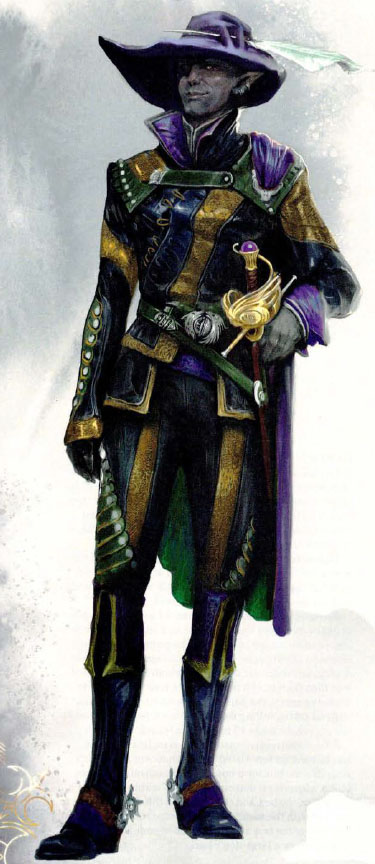 is to convince the leaders of Waterdeep to support Luskan’s bid to join the Lords’ Alliance. Freshly arrived in his cover identity as Captain Zord of the Sea Maiden’s Faire, Jarlaxle is coordinating and ramping up his local intelligence operations.
is to convince the leaders of Waterdeep to support Luskan’s bid to join the Lords’ Alliance. Freshly arrived in his cover identity as Captain Zord of the Sea Maiden’s Faire, Jarlaxle is coordinating and ramping up his local intelligence operations.
NIMBLEWRIGHTS: One of Jarlaxle’s main objectives right now is the sale of nimblewrights. Built by the technomancers of Luskan, he’s brought several dozen of these constructs with him and is selling them at surprisingly compelling prices.
Why? Because he’s actually harvesting data from them. In Jarlaxle’s stateroom onboard the Scarlet Marpenoth (Area U4, see p. 143) there is a specialized crystal ball that allows him to look out through the eyes of any nimblewright and even review what they’ve seen. (We might think of this as a “recording”, but Jarlaxle refers to it as a record of witness.)
After the PCs identify that a nimblewright is responsible for the fireball in Trollskull Alley, they’ll be able to trace the local nimblewrights back to “Captain Zord”. If they speak with Jarlaxle about the nimblewright they’re seeking, he’ll first want to know why they’re looking for it. Following up on whatever the PCs tell him, his agents will discover the hunt for the Stone of Golorr (or he’ll simply review the record of witness for the appropriate nimblewright and discover the Gralhunds’ schemes).
Alternatively, the PCs might decide not to talk to him and instead sneak in and steal his records of sale (or access the records of witness in the crystal ball for themselves). Which is great because, bang, you’ve got a heist pointed at Jarlaxle’s ship.
DESIGN NOTES
If the PCs perform a heist on the nimblewright proprietor instead of speaking with Jarlaxle, it’s very possible that Jarlaxle won’t become aware of the Grand Game and his agents will not become involved in later stages of the scenario. That’s fine, though, because we’ve already gotten maximum bang for our buck from the player-initiated heist, right?
Full details on how the nimblewright-focused investigation is structured will be found in Part 5 of the remix.
CASSALANTERS
The Cassalanters were actually interested in Neverember’s Enigma even before they knew that 500,000 dragons were on the line: Lord Neverember was not the first person to hide secrets within the Stone of Golorr, and through their fiendish researches the Cassalanters have identified a number of other lucrative and powerful lines of inquiry they would like to pursue (see Part 6 of the remix).
They discovered that Neverember had hidden one of the Eyes in the crypt of Lady Alethea Brandath, Renaer’s mother. They went to the crypt and extracted the Eye from the magical wards Dagult Neverember had placed around it. (Ironically, they were literally standing on top of the Vault itself and didn’t know it.)
When the Cassalanters learned about the embezzled gold, however, their priorities quickly shifted: They saw an opportunity to save their children from the pact they had made with Asmodeus.
A PLEA FOR HELP: After the explosion, during the time that they’re investigating the nimblewrights, the PCs are contacted by the Cassalanters, who request an audience. The Cassalanters’ own agents were in Trollskull Alley that day because they, too, were tracking the Stone, so they know that Dalakhar was trying to bring the Stone to the PCs.
When the PCs arrive at the Cassalanter estate:
- They are given an opportunity to “accidentally” meet the Cassalanters’ children, who come running into the Entrance Hall (C1) while the PCs are waiting.
- Lady Cassalanter comes out personally to gather the PCs from the Entrance Hall and shoos the children away. She leads the PCs to the Reading Room (Area C4), where they can look out over the Butterfly Garden (Area C25). The children have scampered through the mudroom and are playing out there now. (Make sure to mention the black dragon head mounted on the wall of the room.)
- Lady Cassalanter introduces her husband and they tell the PCs a modified version of their plight: The twins were cursed at their birth by Asmodean cultists to lose their souls on their ninth birthday. The Cassalanters have discovered a ritual which can save them, but it requires them to sacrifice “one shy of a million gold coins”. They are quite rich, but even in leveraging everything they own they still can’t raise that monstrous sum. If they could get their hands on Neverember’s ill-gotten gains, though… Will the PCs please help them?
- And then, of course, Lady Cassalanter turns to gaze wistfully at her children frolicking with the butterflies.
Obviously they don’t tell the PCs that the ritual also involves killing 99 people. (Unless they have some reason to think that the PCs would think that to be a great idea.) They don’t technically need all the money, and are willing to cut the PCs in on 10% of it or agree to return the surplus funds to the city.
THE FEAST: If the PCs agree to help and succeed in delivering the gold to the Cassalanters, they receive invitations to the feast where Ammalia poisons 99 guests in the garden pavilion and the final ritual is performed.
You may be tempted to have the Cassalanters betray the PCs by having them be among the 99, but I actually recommend the opposite: If the PCs have delivered as promised, the Cassalanters are more than pleased with their work and are looking forward to a long and prosperous friendship with them. They’re invited to feast in the Banquet Hall (Area C15) where all the non-sacrificial guests are celebrating.
If the PCs haven’t discovered the Cassalanters’ true motives, it will be far more effective for them to be horrified by their implication in the mass murder.
DESIGN NOTES
As far as I can tell, Renaer’s mother has never been given a first name, so I’ve provided one. If I’m in error on this (I haven’t, for example, read the novels the Neverembers appear in) please let me know.
Note that everything the Cassalanters tell the PCs is true… from a certain point of view.


